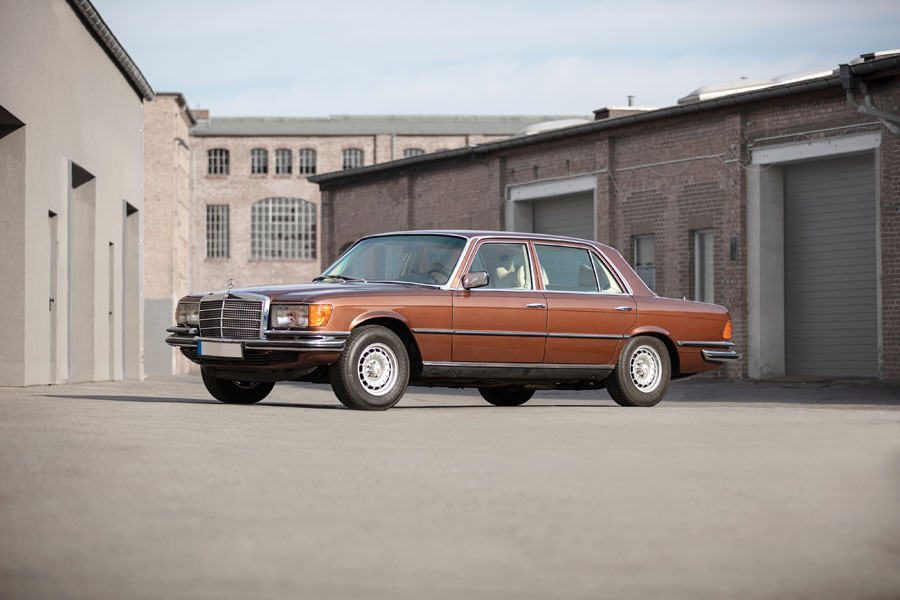Chassis Number: 11603612006273
The example offered here was originally shipped to the United States in 1979 with full luxury accessories including a Becker Mexico stereo cassette radio, automatic antenna, an electric sunroof, alloy wheels and finished in Milan Brown Metallic. In 2006 the car was registered in Virginia before it was sold to Berlin and exported in 2009. At that time, the 6.9 underwent basic reconditioning, as indicated by the extensive service receipts.
These documents also show an extensive restoration by a reputable German company between 2014 and 2017, which included repainting and interior work. Today the vehicle is in showroom condition, with the M100 showcased in the impeccably presented engine compartment. Today the vehicle shows 108,242 km on the European-style gauges. For the collector who wants a comfortable luxury automobile that was a milestone in Mercedes-Benz history in its time and will draw admiring attention today, this 450SEL 6.9 is a worthwhile acquisition.

